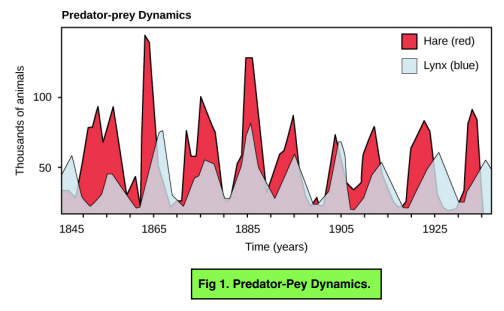Organisation & Trophic Levels - Trophic Levels & Food Chains (GCSE Biology)
Trophic Levels & Food Chains
Trophic Levels
Levels of Organisation
We have already discussed the levels of organisation in previous chapters. So this is just a recap:
- Organisms are organised from top to bottom. There is a food chain in ecosystems. This consists of producers, primary consumers, secondary consumers and tertiary consumers. These are known as trophic levels.
- There are feeding relationships. Producers photosynthesise. Primary consumers eat producers. Secondary consumers eat primary consumers. Tertiary consumers eat secondary consumers.
- Photosynthetic organisms produce biomass. Biomass is a term used to describe getting energy from biological matter. The sun is the principle source of energy from which producers photosynthesise in order to produce biomass. They are fed upon by primary consumers. Producers, as said earlier as usually a green plant or an alga. They make glucose from photosynthesis to provide energy. This energy is transferred through organisms and eventually back to the environment after death.
- Food webs can track the feeding relationships of organisms. A food chain shows the transfer of energy from one organism to another by ingestion, starting with a producer. A food web is a network of interconnected food chains. Looking at the example below, producers are the trees, the primary consumer is the giraffe and the secondary consumer is the lion. If there is a shortage of fruits one year, the bats will starve and so die and in turn the eagles will starve and die, as they lose their prey. Therefore, if one species is removed e.g. if humans over-harvest a food species, then the whole ecosystem suffers.

Only around 10% of energy is transferred along each trophic level. This means that food chains are highly inefficient.
Animals and other organisms get all of their supplies of nutrients and energy from the ecosystem that they are in.
Predators and Prey
As discussed earlier, producers are eaten by primary consumers, which
are in turn eaten by secondary consumers and then tertiary consumers.
- Predators kill and consume other organisms. Predators kill and eat other organisms, so the predator of the producer is the primary consumer and the predator of primary consumer is the secondary consumer.
- Prey are killed and eaten by predators. Prey are killed and eater by predators. Therefore, producers are the prey of primary consumers and primary consumers are the prey of secondary consumers.
- Predators and prey work in cycles. Predators and prey fluctuate with one another. As the predators go up, the prey will reduce, leading to a reduction in the predators as there will be less food.
- The lynx and snowshoe hare follow this pattern.

As you can see here, there is great fluctuation between the population of the hare and the lynx. As the lynx population decreases, the hares can survive for longer, so their population increases. This then provides increased food for the lynx, so the lynx population increases, leading to a drop in the hare population as the number of predators increases.






Still got a question? Leave a comment
Leave a comment